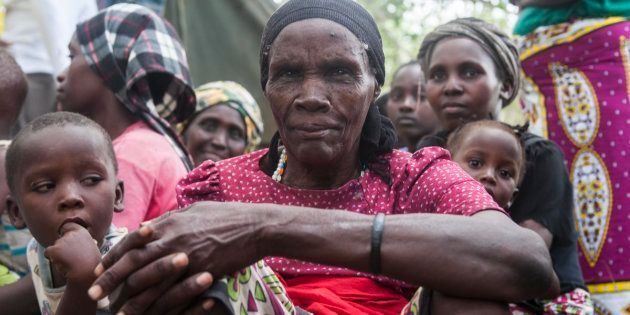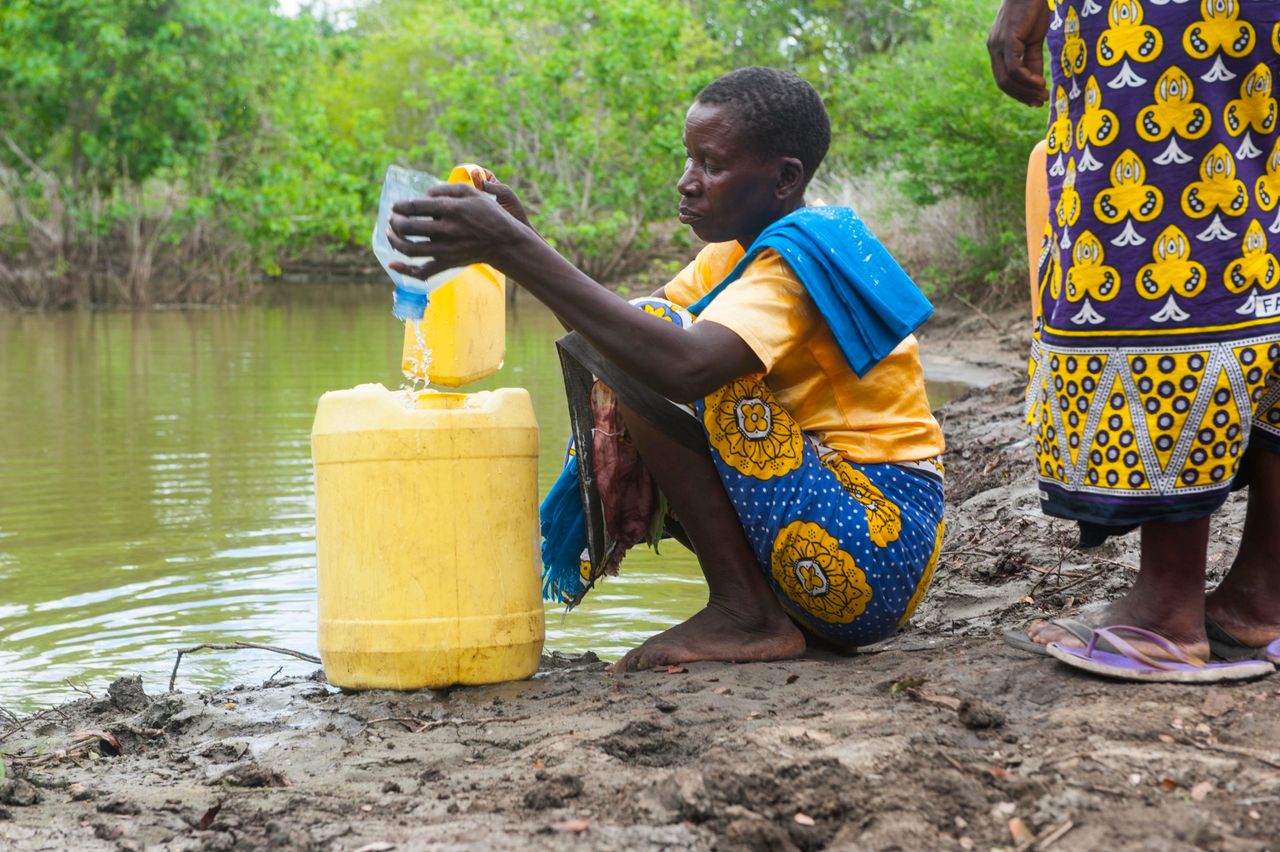
KILIFI COUNTY, Kenya ― Each morning before the heat rises, Kanze Kahindi sets out from her one-room hut near the village of Changojeni for a six-mile walk to the nearest small river. She returns eight hours later, balancing a yellow 5-gallon jerrycan of water on her head. Her chest and legs ache when she finally deposits the 42-pound container in her home, but there’s barely time to rest. Soon she’ll be cleaning and cooking food for her eight children.
While men in communities like Kahindi’s till land and care for livestock, women and girls arguably have the most important responsibility when it comes to their family’s survival: fetching water to use for daily drinking, cooking, cleaning and irrigation.
Changojeni is one of the driest villages in Kilifi County, in southeast Kenya. But water scarcity is a major problem in the entire area. Though the Galana River, connected to the Indian Ocean, flows through the county, many villages are too far away to access its water, and they’re largely shut off from modern conveniences like pipelines. Water collected from open sources, like dams and rivers, is often polluted.
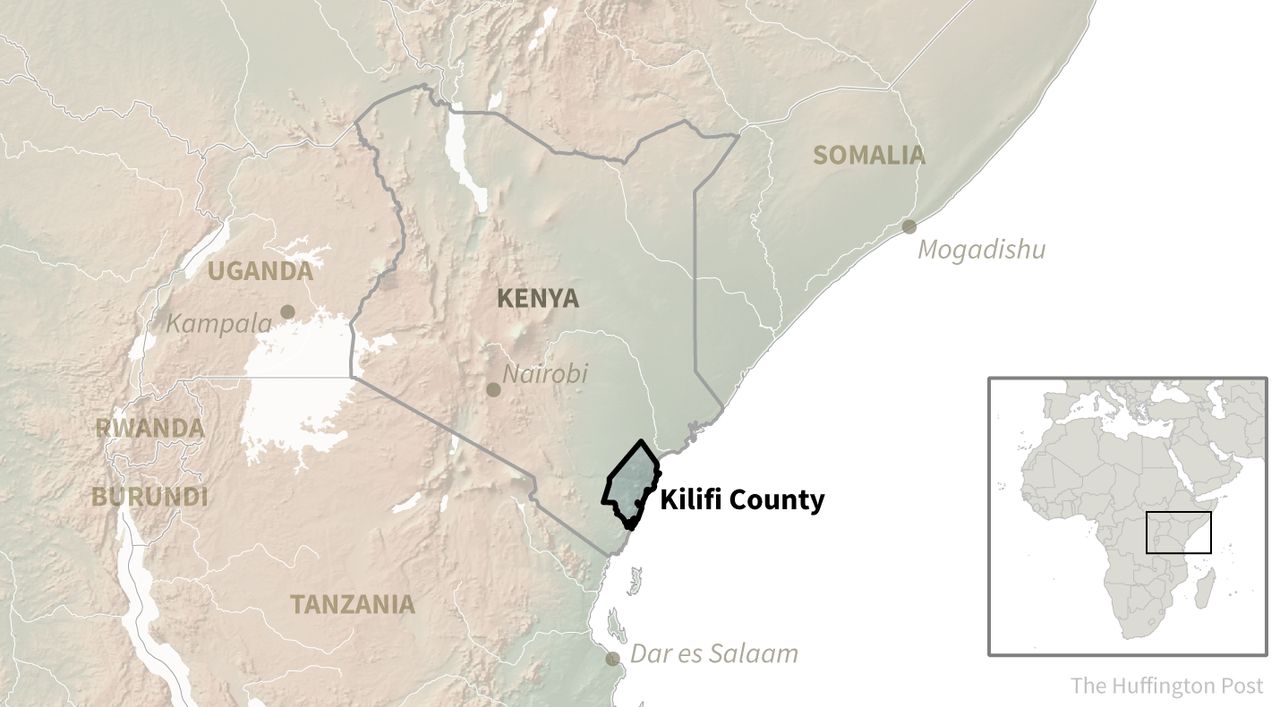
Kilifi County’s situation isn’t unique. Although Kenya is one of Africa’s more developed nations, only 63 percent of its citizens live in areas where water can be accessed nearby, according to World Bank statistics. On average, Kenyans must walk about six miles a day to collect water.
Water has only become more scarce as the region struggles with a crippling drought. In villages like Kahindi’s, it hasn’t rained in almost two years. Many of Kilifi’s natural water sources are drying up. The drought has leftabout 2.6 million people in urgent need of clean water.
The international nongovernmental organization World Vision began workingwith Kilifi County on water accessibility in 2008. They completed seven boreholes and a 52-mile pipeline that delivers water from storage tanks and from the river straight to communities. They’re in the process of constructing more boreholes and another pipeline.

The project is yet another reminder of just how significantly water access can affect the daily lives of women and girls.
“The time gained is going to be used for other activities, like education,” said Thomas Makanga, Kilifi County’s director of water affairs. “The girl child who has been used to collect water now is going to have time for her own studies. Also, this water [will allow us to] have some small gardens, many vegetables. This type of activity is going to alleviate the economy. It’s going to change the livelihood of this place.”
HuffPost recently visited Kilifi County and spoke with women of all ages about their relationships with water ― how the lack of it has affected their lives, and how improved access could change the lives they’ve envisioned for themselves and their children. Their stories have been condensed and edited for clarity.
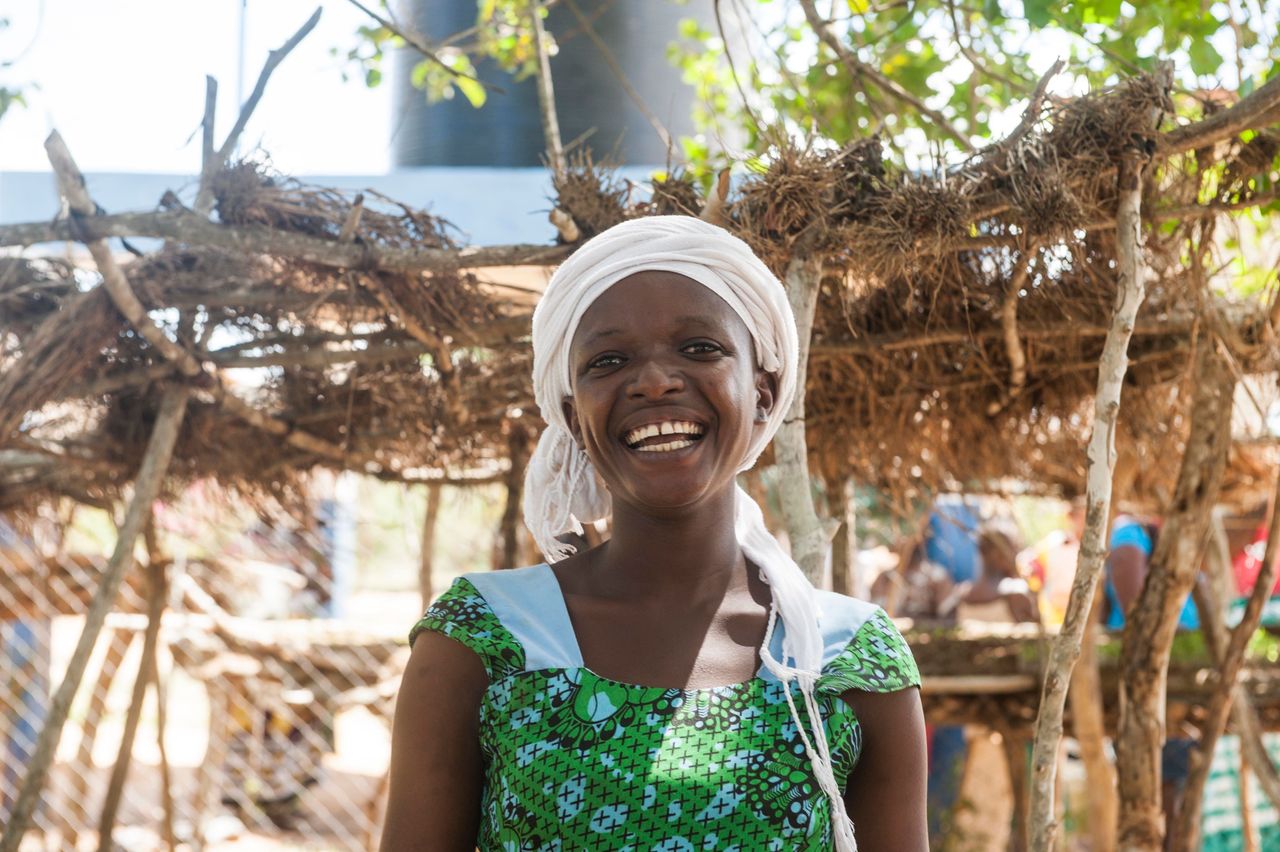
Gladys Mapenze, 26
When Mapenze was a girl, there was no such thing as immediate access to clean water in her village, Kibaoni. In 2012, when Kilifi County and World Vision began working on the pipeline, Kibaoni applied for the construction of a water point ― a tap where water is sold for two Kenyan shillings, or about 2 cents, per 20 liters.
Since its construction, the water point has been supplying 1,500 people across three villages. The women of Kibaoni no longer spend hours fetching water. Instead, they take turns manning the water point, Mapenze explained. They were trained in how to read its meter and manage its finances.
“We started selling water, accumulating profits. Our account started becoming fatter and fatter,” Mapenze laughed. “Now we’re able to use that money to offer small loans to help with your household, your children’s education ― any need that arises.”
The newfound water also allowed Mapenze and 19 other women to launch a tree nursery project. The group cultivates fruit and nut trees like eucalyptus, mangoes, passion fruit, and cashews, and sells the saplings to community members.
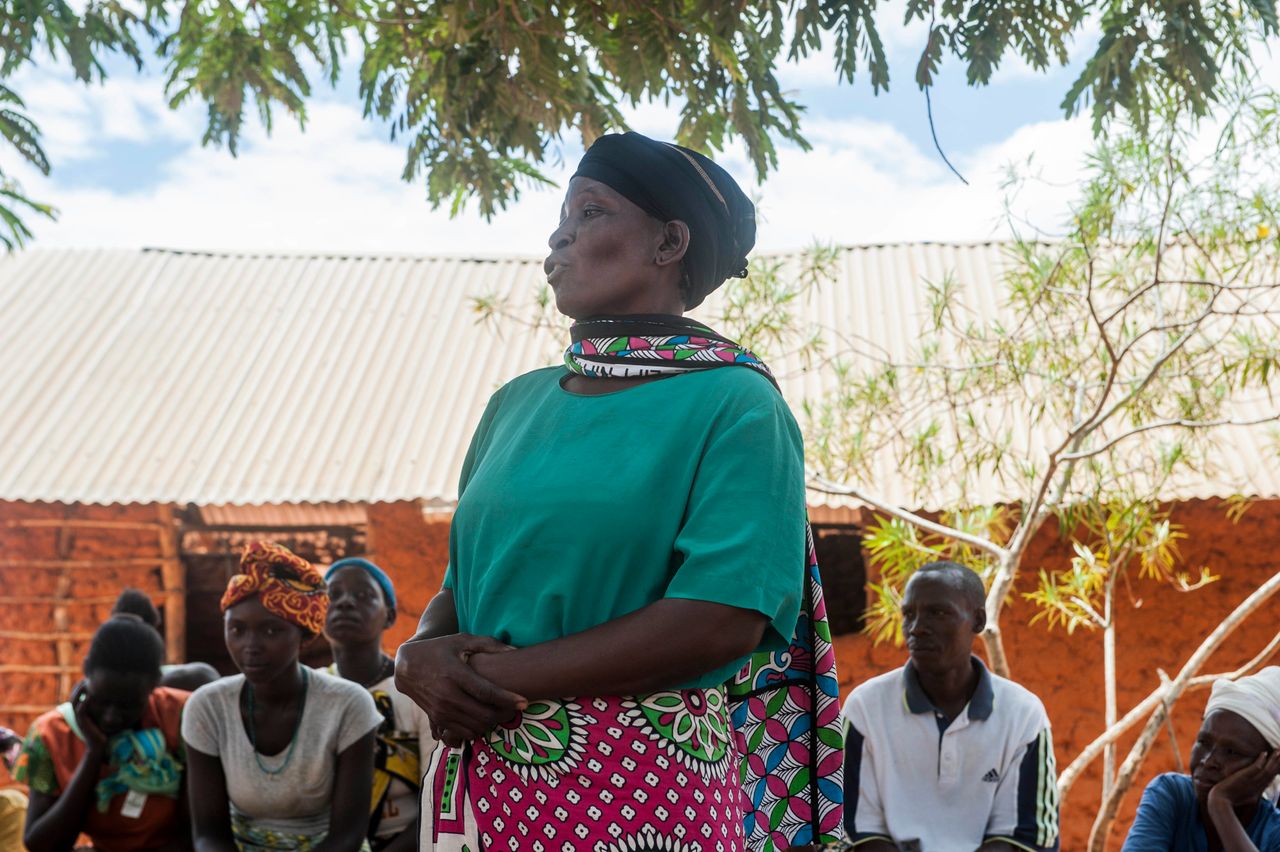
Pauline Kadzo Kahindi, 55
Kahindi is a resident of Changoto, a village with no water source. She lamented the particular physical and developmental issues that women face when they lack access to water. For example, no water means no local hospitals or health centers.
“We are the ones taking care of babies,” she said. “When babies get sick, we carry the babies on our backs to the same place we fetch water to get health care for the babies.”
In addition to child care, women are responsible for cleaning and cooking, she said. That requires a lot of water.
Richer families are sometimes able to pay someone 100 shillings, or about $1, to fetch water on their behalf and deliver it on a motorbike, Kahindi explained.
But for her, “it’s very difficult to get that 100 shillings.”
It hasn’t rained in Changoto in almost two years,and the absence of water is threatening her children’s education.
“From our home to the school, the children walk two hours,” she said. “We have to wake up very early and get them on the road so they can be in school on time.”
But with the drought stretching on and on, they now have to choose between going to school and fetching water.
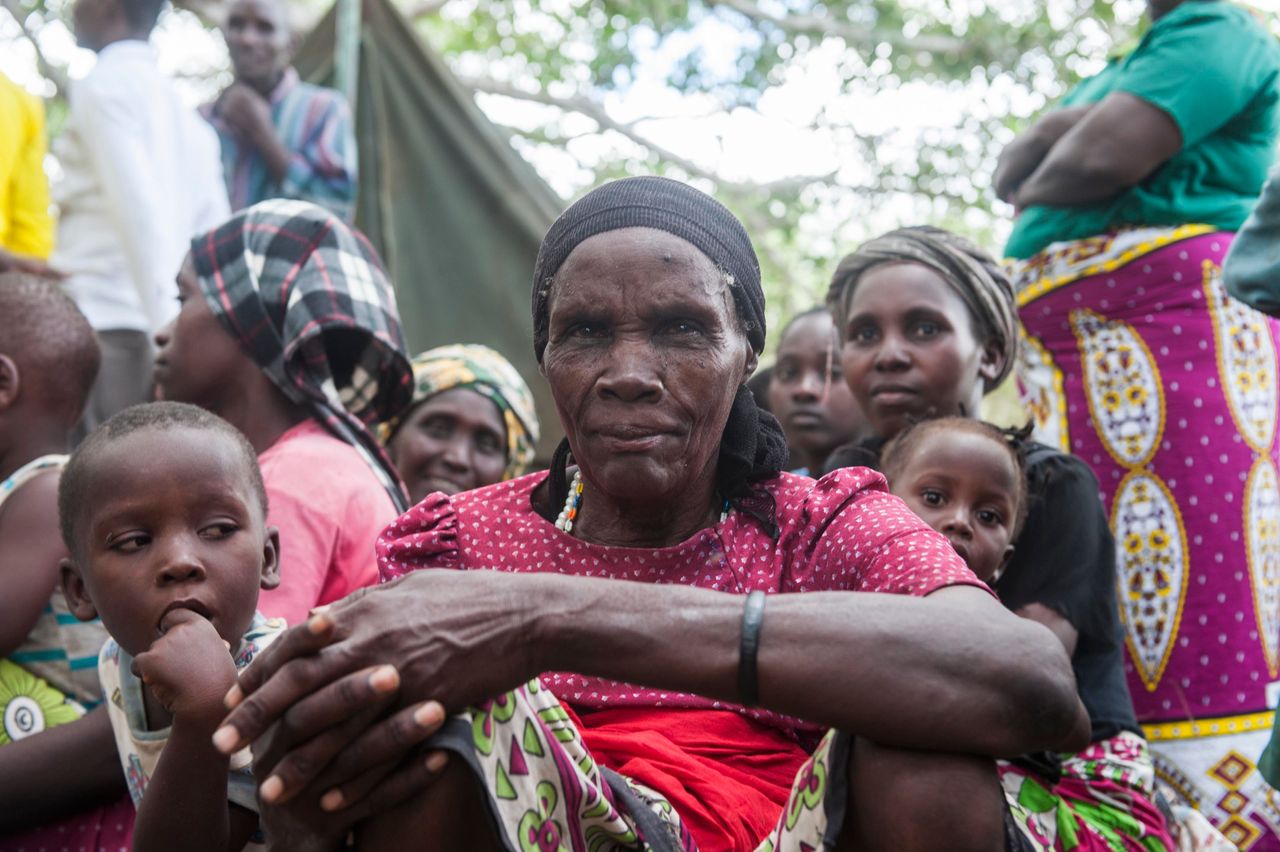
Alako Bashora, 70
Bashora, a mother of 15, said she has lived in the village of Chamari her entire life. As a young girl, she used to walk to a town 25 miles away to collect water.
“I would go, fetch water there, do some household chores like washing my clothes, and come back the next day,” she said. “I’d actually take two days.”
With water collection taking up so much of her time, Bashora never went to school. If she could do it all again, Bashora said, she would live somewhere with water nearby so she’d be able to pursue an education. “My passion would have been learning medicine so I could have assisted other women in giving birth, instead of women being assisted by men in giving birth,” she said.
As of this month, Chamari has its own direct source of water. But the project was years in the making. The county government and World Vision drilled a plot for a borehole a few years ago, but the water yield was too low to be able to pump much out of the earth. They started again from scratch, looking for a better location. The project was finally completed in early April, to the joy of Chamari’s villagers.
Bashora sat and watched as the borehole spat water. She’d never seen water emerge from the ground like that.
“I felt as if that water was being poured on my soul,” Bashora told HuffPost. “My soul was getting watered. It felt like a tree that had lost hope being rejuvenated.”
The first thing she planned to do once she fetched water, she said, was to wash herself and her clothes, and then cook a meal for her family.
Want to help? Support organizations like World Vision, UNICEF, the U.N.’s Office for the Coordination of Humanitarian Affairs and other humanitarian organizations working to save lives in the East African nations ravaged by drought.
CORRECTION: A previous version of this article misstated the conversion rate of the Kenyan shilling.
